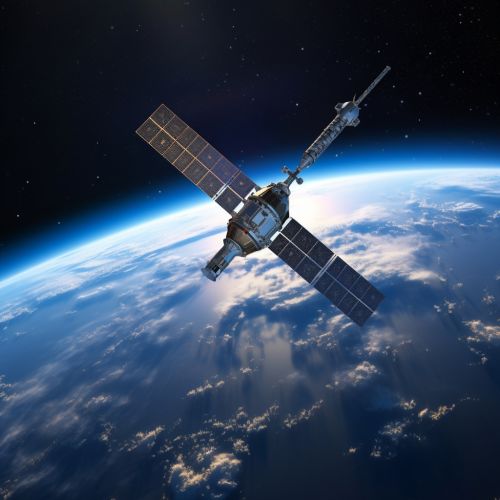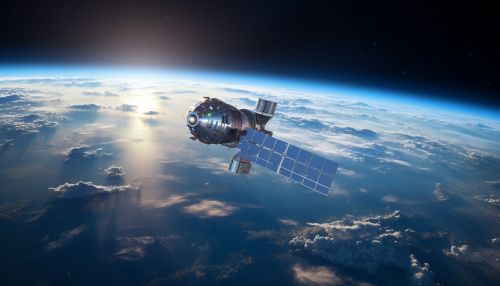Satellite communication
Introduction
Satellite communication is a mode of communication that uses artificial satellites to relay and amplify radio telecommunication signals. This technology has a wide range of applications, including television broadcasting, weather forecasting, and global navigation.


History
The concept of satellite communication was first proposed by Arthur C. Clarke in 1945. The first artificial satellite, Sputnik 1, was launched by the Soviet Union in 1957. This marked the beginning of the space age and paved the way for the development of communication satellites. The first communication satellite, SCORE, was launched by the United States in 1958. This was followed by the launch of Telstar by Bell Telephone Laboratories in 1962, which was the first satellite to relay television and telephone signals.
Types of Satellites
There are several types of satellites used in communication, each with its own unique characteristics and applications. These include geostationary satellites, low earth orbit satellites, and medium earth orbit satellites.
Geostationary Satellites
Geostationary satellites are located in the geostationary orbit, a circular orbit 35,786 kilometers above the Earth's equator. These satellites remain stationary relative to the Earth's surface, making them ideal for communication purposes. They are primarily used for television broadcasting and weather forecasting.
Low Earth Orbit Satellites
Low Earth Orbit (LEO) satellites operate at altitudes of 2,000 kilometers or less. These satellites move at high speeds and have a short orbital period, typically 90 to 120 minutes. LEO satellites are used for data communication, such as email, voice communication, and internet access.
Medium Earth Orbit Satellites
Medium Earth Orbit (MEO) satellites operate at altitudes between 2,000 and 35,786 kilometers. These satellites are used for navigation systems, such as the Global Positioning System (GPS).
Satellite Communication Systems
A satellite communication system consists of a ground station, a satellite, and user terminals. The ground station, also known as the earth station, transmits and receives signals to and from the satellite. The satellite amplifies the signals and retransmits them to the user terminals.
Ground Station
The ground station is a complex system that includes a large parabolic antenna, transmitters, receivers, and control equipment. The antenna is used to transmit signals to the satellite and receive signals from the satellite. The transmitters generate the signals that are transmitted to the satellite, while the receivers process the signals received from the satellite.
Satellite
The satellite is equipped with transponders, which receive signals from the ground station, amplify them, and retransmit them to the user terminals. The satellite also has a power system, which includes solar panels and batteries, to provide power for its operations.
User Terminals
User terminals can be fixed or mobile. Fixed user terminals include satellite dishes installed on buildings, while mobile user terminals include satellite phones and satellite radios.
Applications of Satellite Communication
Satellite communication has a wide range of applications, including television broadcasting, radio broadcasting, internet access, weather forecasting, and global navigation.
Television Broadcasting
Satellite television is a service that delivers television programming to viewers by relaying it from a communications satellite orbiting the Earth directly to the viewer's location. The signals are received via an outdoor parabolic antenna, commonly referred to as a satellite dish.
Radio Broadcasting
Satellite radio is a digital radio service that is broadcast via satellites. This service offers a wide range of channels, including music, news, sports, and entertainment.
Internet Access
Satellite internet access is an internet access service that uses communication satellites to provide broadband connectivity. This service is particularly useful in remote areas where traditional internet services are not available.
Weather Forecasting
Weather satellites are used to monitor the Earth's weather and climate. These satellites provide data for weather forecasting, climate research, and monitoring of natural disasters.
Global navigation satellite systems (GNSS), such as GPS, GLONASS, and Galileo, use satellites to provide geolocation and time information to a GPS receiver anywhere on or near the Earth.
Future of Satellite Communication
The future of satellite communication looks promising, with advancements in technology leading to the development of more efficient and cost-effective communication systems. These advancements include the launch of high-throughput satellites, the development of low-cost user terminals, and the use of advanced modulation and coding schemes.
